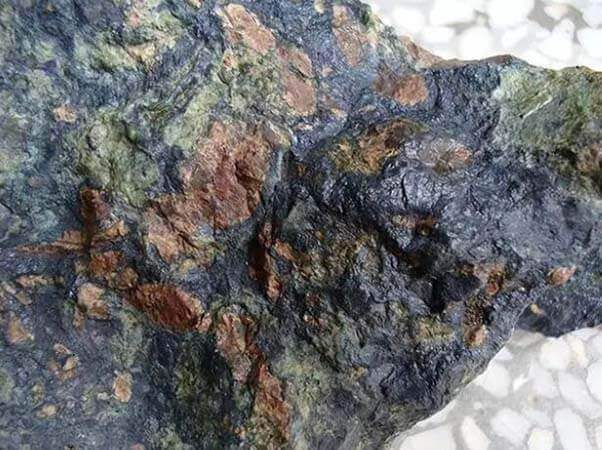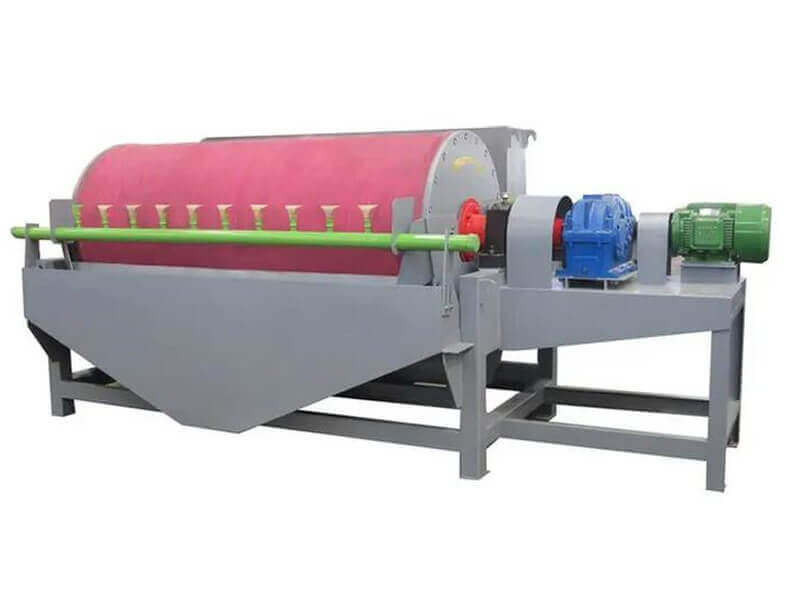Copper-molybdenum ore mainly exists in porphyry copper deposits. This objective situation determines that the raw ore grade is generally low, and rare and precious elements such as rhenium, gold, and silver in the ore are also usual. It is a challenging task to select copper and molybdenum. Although significant progress and innovations have been made in the copper-molybdenum separation process and reagents, there are still many separation problems, mainly in the following aspects.
Copper-molybdenum Separation Process Problems
1. Drug residues
The copper-molybdenum mixed flotation process entrains a large amount of residual collector and affects the separation of copper and molybdenum. Increase the analysis of the mineral surface and remove the drug from the mixed concentrate, which increases the complexity of the process. The drug dosage also affects the subsequent separation to a certain extent.
2. Regrinding of mixed concentrate
During the copper-molybdenum mixed flotation process, since the monomers do not completely dissociate, it often entrains other associated organisms, and the molybdenite intercalation particle size is generally fine. The coarse concentrate often needs to be reground. Regrinding is easy to cause over-crushing, mudification, mutual attraction and cohesion of gangue and minerals, and the phenomenon of minerals being “sludge-covered,” thereby inhibiting mineral flotation and reducing the recovery rate of concentrate.
3. The influence of other minerals
Copper-molybdenum ore contains other beneficial minerals with similar buoyancy, which makes the process more complicated, and adding more inhibitors also affects the separation of copper and molybdenum. Part of the fine-grained gangue minerals floats together with the molybdenum minerals after many times of beneficiation, reducing the grade of the concentrate.
4. The influence of specific ions
Under normal pH, some ions can change the flotation behavior of minerals: for example, when the battery effect of iron in ore grinding and flotation works, redox reactions occur, and calcium ions can activate copper sulfide and affect the separation of copper and molybdenum. On the other hand, calcium ions can be adsorbed on the edge of molybdenite, compressing the adsorption space of collectors, affecting the electrokinetic properties of the molybdenite surface, thereby reducing the buoyancy of molybdenite and reducing the recovery rate.
In the current beneficiation technology, copper-molybdenum mixed flotation needs to select as much molybdenum ore as possible in the copper concentrate. Still, the molybdenum content needs to be higher, making it challenging to separate smoothly by flotation. Even though the separation is not economical, It could be better too. In desperation, most concentrators must bite the bullet and produce copper-molybdenum mixed concentrate.
How to Solve The Difficulty of Separating Coppe-molybdenum?
- For copper minerals dominated by chalcopyrite and bornite, inhibitors such as sodium sulfide, cyanide, and arsenic are quite effective;
- For secondary copper sulfide minerals, the inhibition effect of ammonium sulfide, ferricyanide and ferrocyanide, oxidant, hypochlorite, and hydrogen peroxide is also good;
These are all methods of separating copper and molybdenum by floating molybdenum and suppressing copper through inhibitory agents. Still, in comparison, there are more appropriate methods to achieve better flotation separation effects:
- Concentrated drug removal: It can effectively remove excess chemicals in the mixed concentrate as long as the concentration of stirring and roughing is appropriate.
- Steam heating: It can effectively decompose and destroy the collector film on the mineral surface, accelerate the absorption, inhibit the oxidation process of sulfide, and significantly improve the separation index.
- Sodium sulfide is added in stages: Sodium sulfide has an excellent inhibitory effect on metal sulfide minerals. Adding it in different stages is more conducive to the inhibitory effect.
- Nitrogen can also be used for flotation: Recycling reagents in separating copper and molybdenum will consume a lot due to oxidation. From the perspective of saving reagents, using nitrogen to separate copper and molybdenum can effectively reduce the content of reagents. Still, this technology is unsuitable for mastery of the craft and requires higher requirements.
Copper and Molybdenum New Separation Process
1. Nitrogen filling method
Since most of the inhibitors commonly used in separating copper and molybdenum are reducing agents, it is easy to oxidize and fail to increase the consumption of inhibitors. To reduce the reaction of inhibitors with oxygen, some people use nitrogen instead of air as the foaming medium, thereby reducing the number of inhibitors.
2. Pulsating high gradient magnetic separation method
The pulsating high gradient magnetic separation method is a method for separating fine-grained ores with weak magnetic properties. This method widely uses to separate weakly magnetic iron ore and wolframite. Molybdenite is a non-magnetic mineral (the specific magnetic susceptibility coefficient is 0.098×10-9m3/kg). Chalcopyrite is a weak magnetic mineral (the specific magnetic susceptibility coefficient is 0.844×10-6m3/kg). It can separate them by controlling a specific magnetic field strength.
Using this method to separate the copper-molybdenum mixed concentrate in Dexing Copper Mine, when the ore contains 24.77% copper, 0.227% molybdenum, and -0.04mm fineness accounts for 77.56%, without drug removal and drying, the magnetic field strength is 0.1 Under the condition of T, add a small amount of dispersant, and after one sorting, the crude molybdenum concentrate containing 0.609% molybdenum is obtained, the molybdenum recovery rate is 70.93%, the copper content in the copper concentrate is 25.66%, and the copper recovery rate is 76.27%. As a pre-enrichment method, this method can reduce the amount of ore for floating molybdenum beneficiation, reduce the consumption of chemicals, and reduce production costs.
3. Flotation column separation
Because the dynamic collision of ore particles and air bubbles in the flotation column and the static separation of air bubble particle combinations are better, it is conducive to separating fine and micro-grained molybdenum ores so that it can improve the grade and recovery rate of molybdenum minerals.
A porphyry copper ore cannot obtain qualified molybdenum concentrate in separating copper and molybdenum. The flotation column complete separation process is used to get eligible products: the grade of molybdenum concentrate is 45.86%, the recovery rate is 51.12%, and the copper content is 1.12% %; the grade of copper concentrate is 25.23%, the recovery rate is 87.57%, and the molybdenum content is 0.016%. This method successfully solved the problem of copper-molybdenum separation in a porphyry copper ore. Flotation columns shortened the process flow, significantly reduced the dosage of chemicals, and improved the separation efficiency.
When the grade of molybdenum in the mixed concentrate is 0.17%, and the grade of copper is 23.80% by using the cyclone-static micro-bubble flotation column, the rough separation of the flotation column-regrinding of the coarse concentrate-three-stage column static separation process, Compared with the traditional flotation machine separation process, the grade of molybdenum concentrate increased by 10.19%, and the recovery rate of molybdenum increased by 1.19%. The process is simple and realizes the separation of fine-grained minerals in the field of flotation. Its high selectivity and recovery capacity provides a new technical approach to separating copper and molybdenum.
4. Heating method
An increase in temperature can strengthen the inhibitory effect of the inhibitor to a certain extent. The principle is that heating can decompose, oxidize and desorb the collector film adsorbed on the surface of the pulp. At the same time, since the surface of Molybdenum is less likely to be oxidized than other sulfide ores, heating can increase the difference in floatability of copper and Molybdenum, thereby improving the effect of copper inhibition. In addition, heat treatment can also reduce the dissolution of oxygen in the pulp, thereby reducing the oxidation rate of sodium sulfide and ensuring the concentration of HS- in the pulp.
The heating method has yet to be promoted and used in China, which is common in foreign mines. In the separation process of copper and Molybdenum, most of the processing plants in the former Soviet Union adopted a direct steam heating process. Slurry copper-molybdenum mixed concentrate with sodium sulfide and introduced fresh steam into the flotation tank during the sorting process. The useless consumption of sodium sulfide is significantly reduced by 85% to 91%, and the amount of water glass is reduced by 50%. It improved the grade and recovery rate of the Molybdenum concentrate significantly.
LATEST PRODUCTS
Twin Screw Feeder
【Feeding Capacity】 10-160 t/h【Power】 2.2-…
Tubular Screw Conveyor
【Capacity】6-50 m3/h【Procesible Material】 …
Heavy Plate Feeder
Capacity: 100-240 m3/h Power: 15-45 kW Speed: 0…











